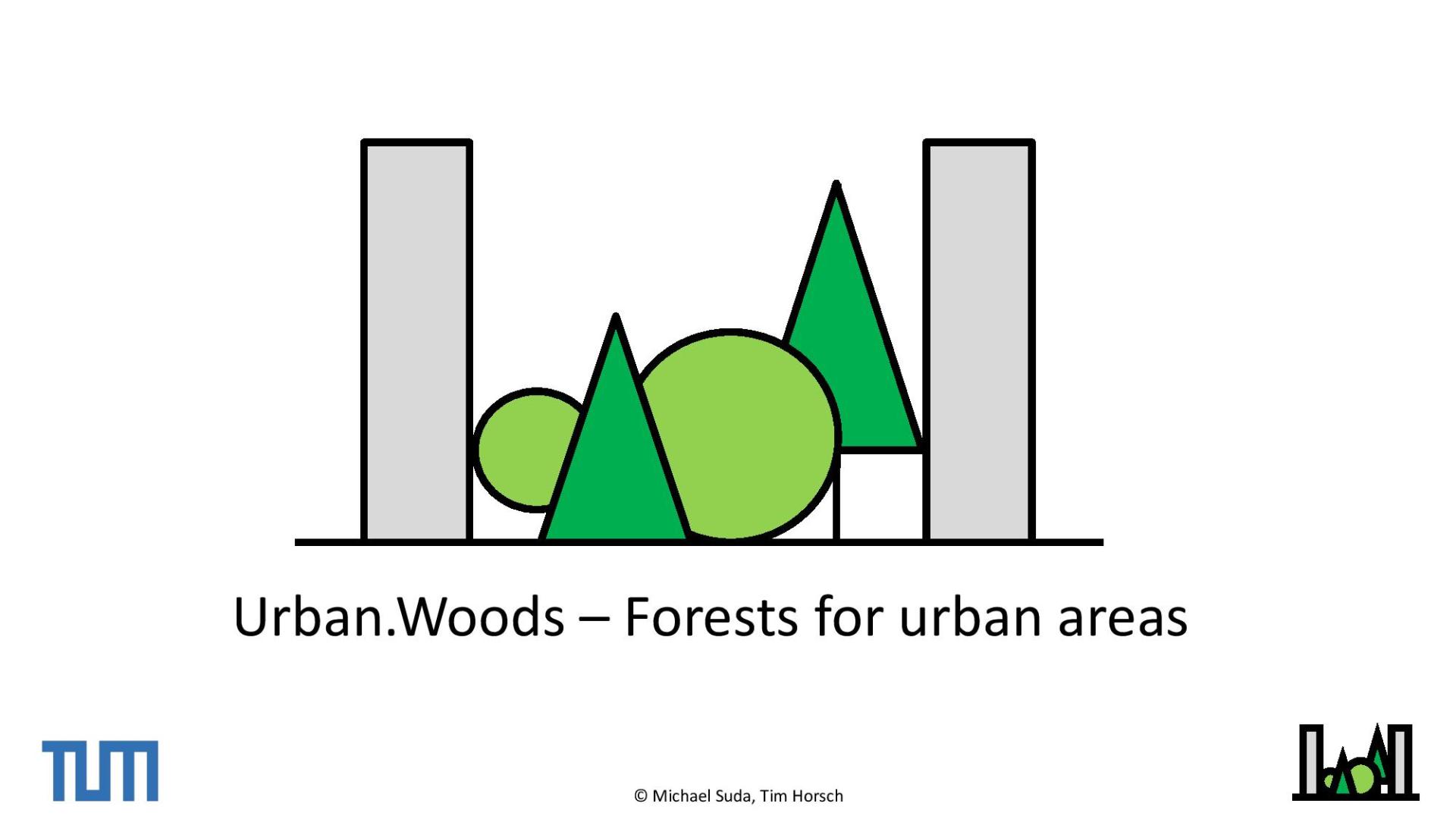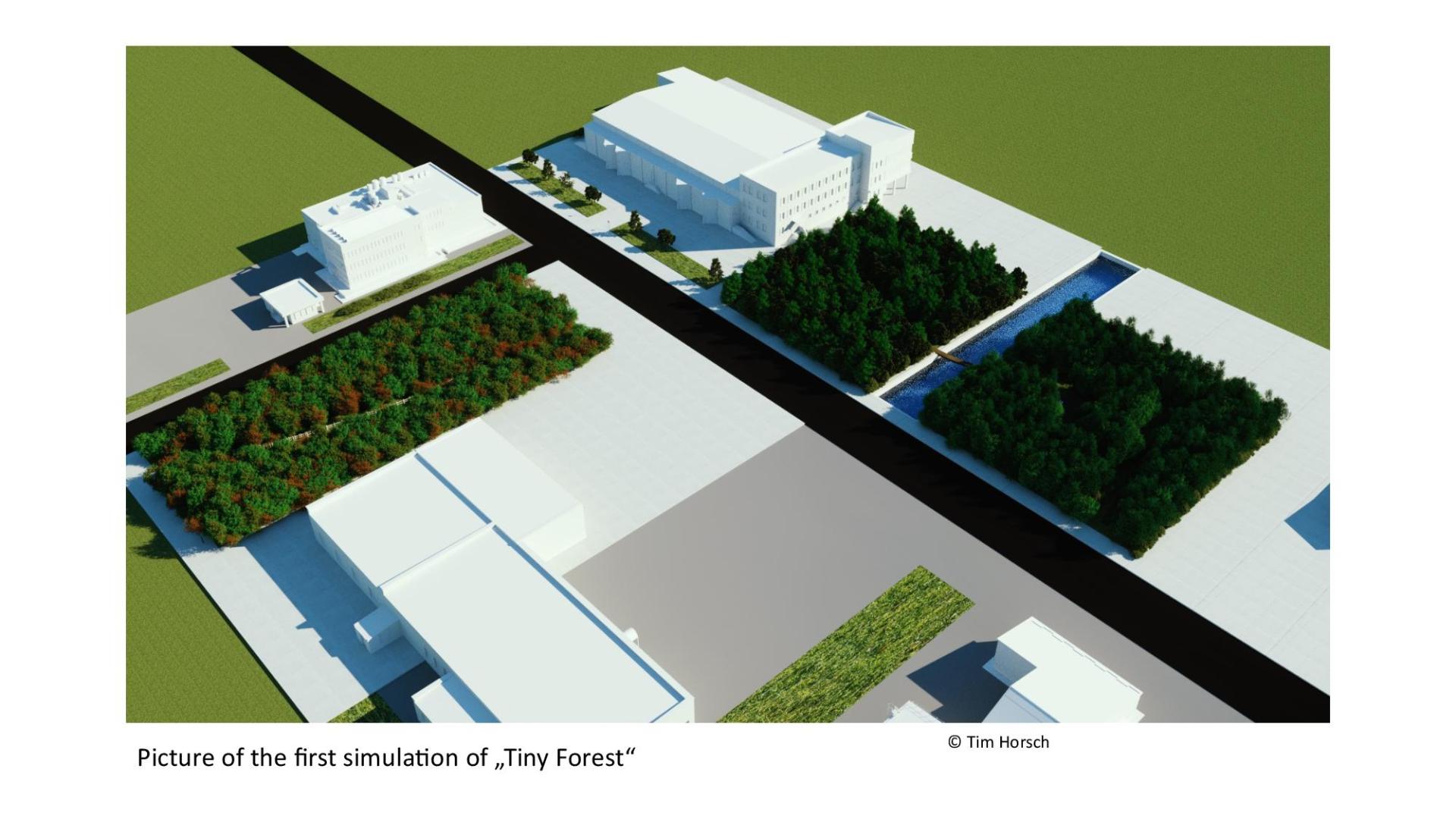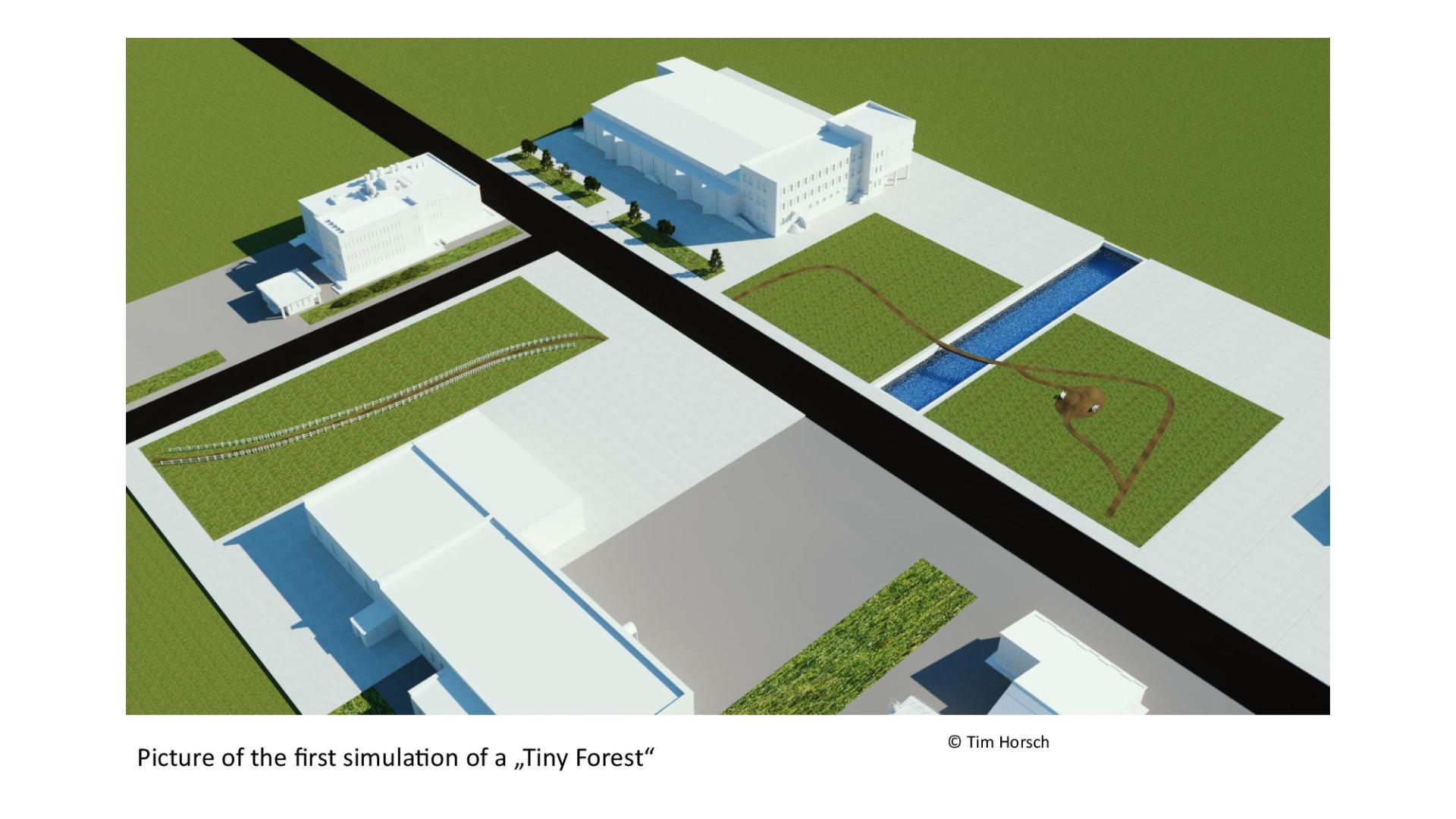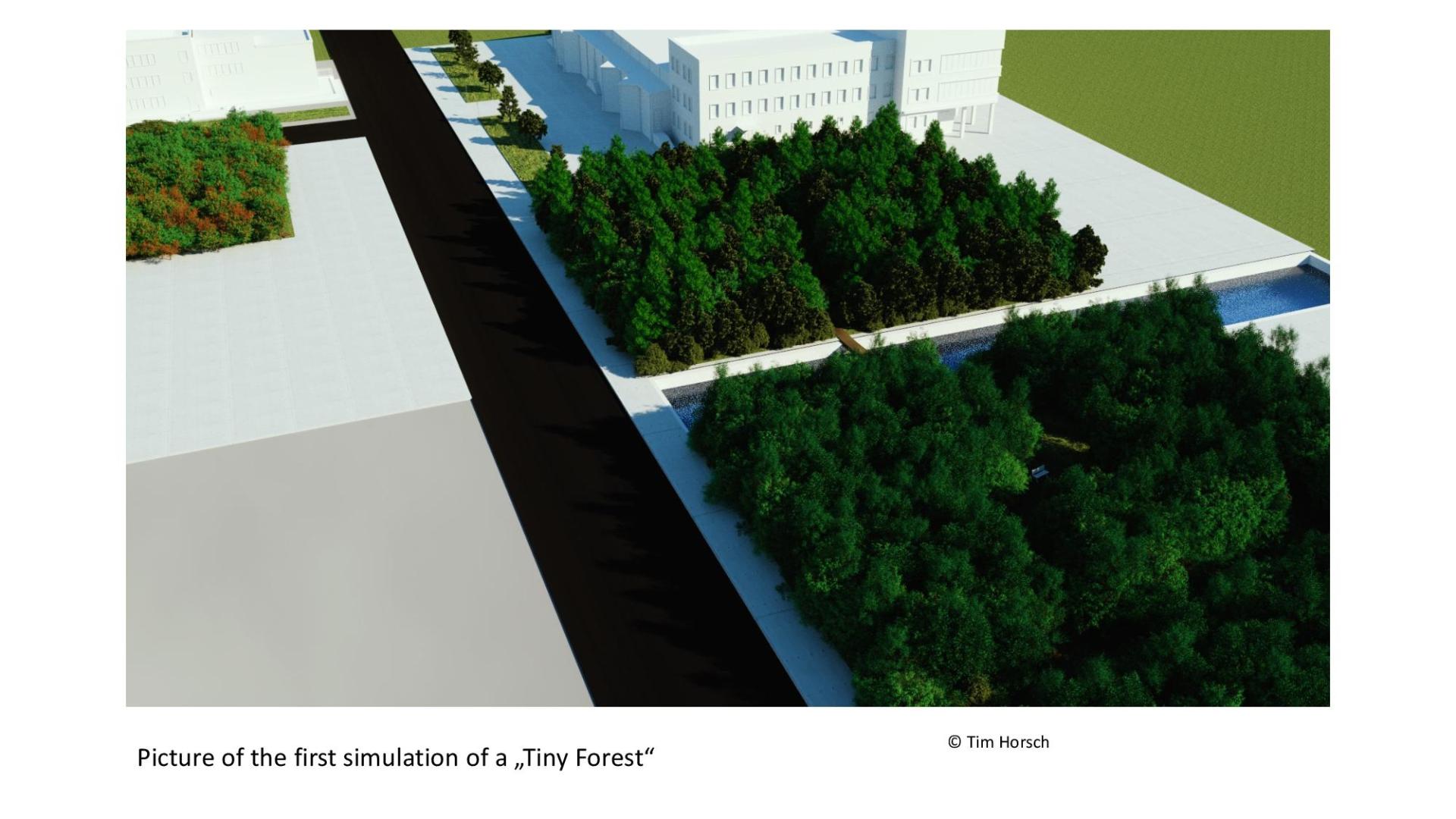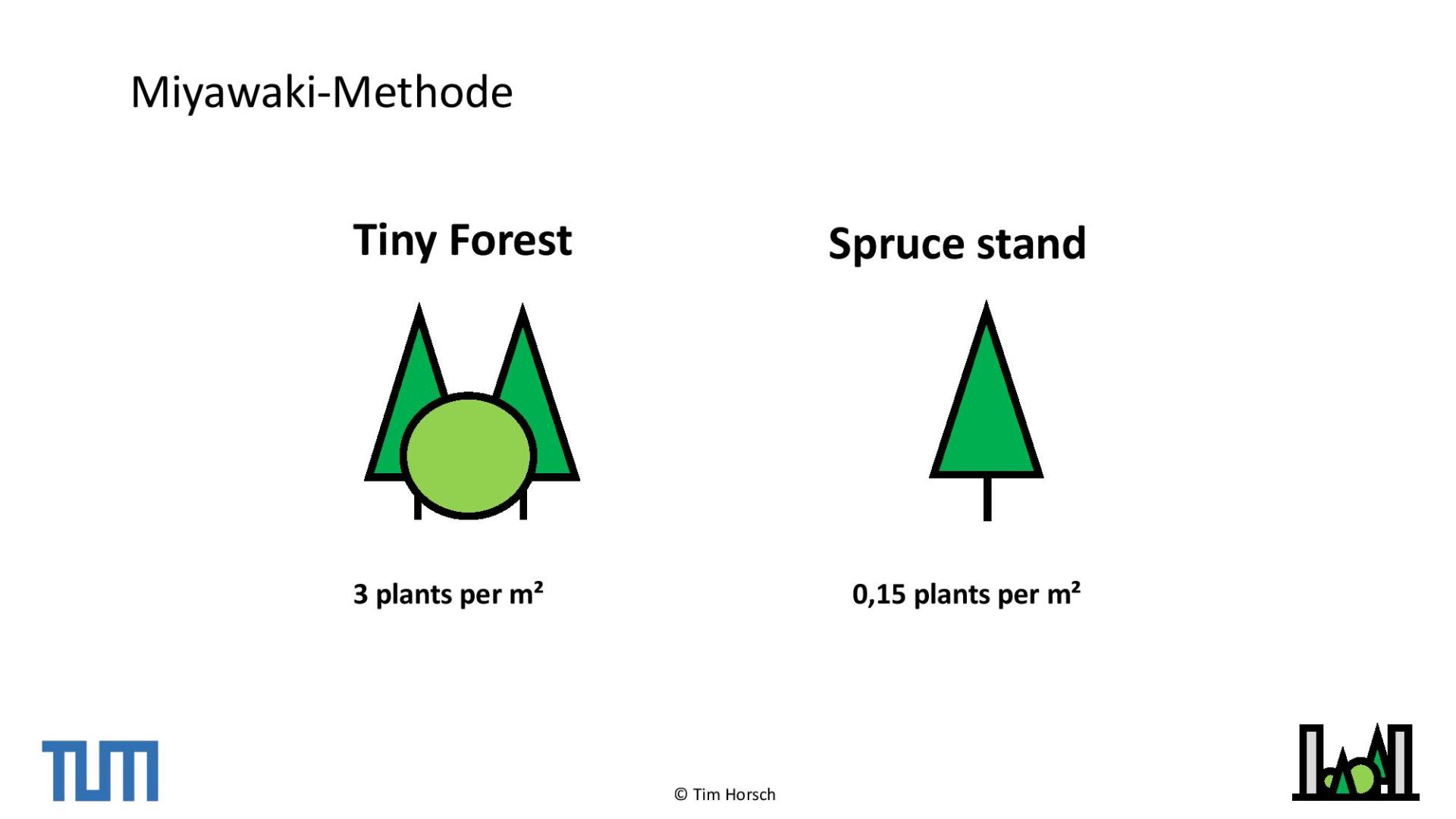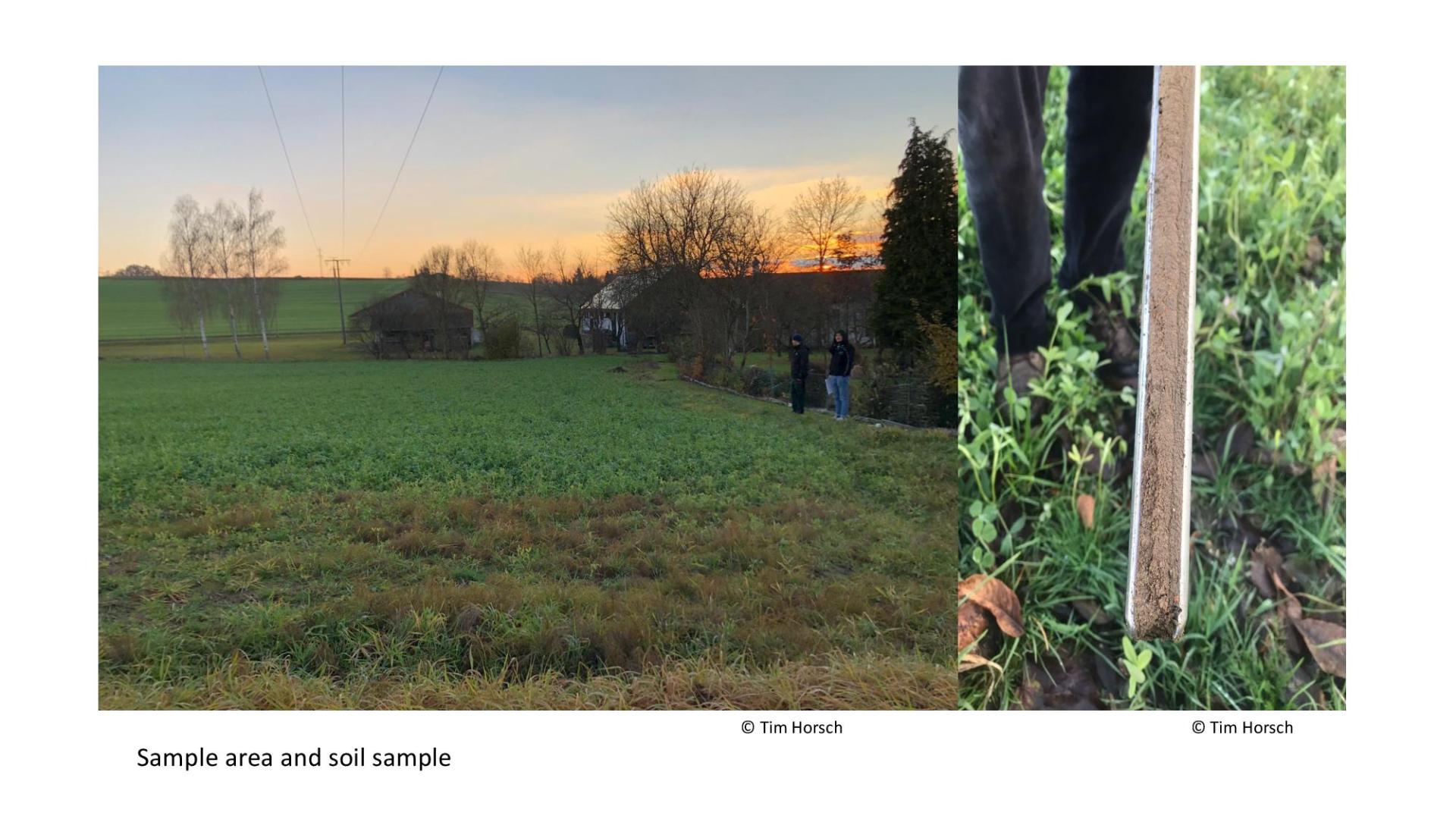Urban.Woods – Green Your Grey
Basic information
Project Title
Full project title
Category
Project Description
“Tiny Forests” are the cooling cells and future oases of cities and contribute significantly to climate neutrality, increase the quality of life and provide the necessary steps towards a “Smart City". Urban.Woods creates ideas of ecological and social concept, which are visualized and simulated by a planning tool. In order to locate suitable areas in cities we use remote sensing data of “Urban-Heat-Islands” to provide the heat islands with cooling, air filtering and biodiversity.
Geographical Scope
Project Region
Urban or rural issues
Physical or other transformations
EU Programme or fund
Which funds
Description of the project
Summary
Urban.Woods is an interdisciplinary project combining scientific insights from various disciplines such as forestry, urban planning, remote sensing and sociology.
“Tiny Forests” are the cooling cells and future oases of cities. They contribute significantly to climate neutrality, increase the quality of life and provide the necessary steps towards a “Smart City". Therefore, Urban.Woods creates ideas of ecological and social concept, which are visualized and simulated by an intelligent planning tool. To locate suitable areas in cities, we use remote sensing data of “Urban-Heat-Islands” to provide conurbations with cooling, air filtering and biodiversity.
“Tiny Forests” promote the identity development of cities and communities through the active design of the “Tiny Forest” through stakeholder participation with the help of QR-Code surveys and workshops. As places of encounter, “Tiny Forests” foster recreation, communication and creativity. Attractive local recreation facilities allow them to be used as a tool for for urban design of our future and have a decisive influence on its charm and identity. Thanks to the cooling and shade-providing microclimate, “Tiny Forests” not only contribute to how multifunctional urban areas and ecosystems can be used, but also exemplify the physical and mental health of residents.
For planting, we use the “Miyawaki Method” from Japan to create a microclimate/ ecosystem in a short time. Thus, ecosystem-services and high biodiversity can be achieved in the smallest possible space and green areas can be integrated into a biotope network.
I am supported by the scientific insights of Prof. Dr. Monika Egerer (Chair of Urban Productive Ecosystems) and Prof. Dr. Michael Suda (Chair of Forest and Environmental Policy) as well as by our partner network of landscape architects.
Key objectives for sustainability
“Tiny Forests” are very dense, fast-growing urban forests of about 200m2 (tennis court size), whose primary products are ecosystem-services such as cooling, air filtering, noise reduction and biodiversity rather than wood as in traditional forestry.
For planting, we use the “Miyawaki Method” to create a microclimate in a short time. In doing so, the natural mechanism of competition is used to promote the height growth of the plants. Due to the rapid altitude growth, a cooling and shade-providing microclimate is created in a very short time, approx. 2-3 growing seasons.
By analyzing soil samples, we can determine the condition of the soil and select sustainable tree species for our concepts to maximize ecosystem performance and build climate-adapted ecosystems. By changing surface temperature on the “Tiny Forest” areas and their surroundings, results and achievements can be measured in the long term in addition to changes in biodiversity.
"Tiny forests" can thus be established as cooling cells and small ecosystems distributed over the city as compensatory and green recreational areas. In addition, this microclimate enable the growth of tree species that would normally not survive in urban areas because it would be too hot and/or too dry for them. For example, species of softwoods such as willows or poplars.
Due to the increase in biodiversity at the tree level, all those species of insects, vegetation herbs and fungi that live with such tree species will follow in the coming years, creating a biodiversity-hotspot in urban areas. The three plants are also divided into main tree species, secondary tree species and a shrub layer and combined according to their light needs to create a structure and minimize selection. In this way, biodiversity is generated in urban areas and green spaces can be integrated into a biotope network.
Key objectives for aesthetics and quality
Through our QR code survey and evaluation, we can draw conclusions about the needs and desires of local residents, build the appropriate "Tiny Forest" according to their needs and desires, and make it an experience. The active design of the “Tiny Forest” through stakeholders in form of workshops through participation makes the ecosystems unique and special.
The flexible design and adaptation of the "Tiny Forest", supported by our modular system/planning tool, "Tiny Forests" can be adapted to any location and fulfill their functions in the optimal design. By playing creatively with tree species concepts, exciting ideas such as edible forests for adventure and experience can be created.
Depending on the function of the "Tiny Forest", tree species can be combined in such a way that they fulfill climatic functions on the one hand, but also bring color and different facets to the cityscape. Residents often want bright and colorful forests that are beautiful to look at in the fall and invite them to linger. Sometimes, on the other hand, they want to see exciting, rare and unusual species such as redwoods or trumpet trees.
In addition to the design/structure and the tree species concepts, many other add-ons are possible in the modular system, which gives the "Tiny Forest" its uniqueness depending on the needs and location. By cleverly placing benches, tables and information boards, “Tiny Forests” become eventful meeting places.
Through educational Citizen Science projects, environmental education can be brought into the ecosystems in a playful way. Some examples would be the use of the "Tiny Forest" as an outdoor classroom, an excursion site for schools and daycare centers, as well as the development of a learning path for education and connection to nature.
Key objectives for inclusion
"Tiny Forests" are open systems and can be made accessible to all groups. By providing shady and cool places, pensioners and elderly people can sit outside in the sun even during lunchtime, parents can play with their children and working people can take their break. "Tiny Forests" are to be made available to all people of all ages and walks of life in a society and to strengthen cohesion within society. They serve not only as a place for excursions and playgrounds, but also as a place where everyday life can and should take place.
Lingering and contemplation of nature is strengthened in "Tiny Forests" and can be incorporated into everyday life. In this way, local recreation areas are created in the middle of the city. Since these small forests are spread throughout the city and are not one big park, they can be planted in many different districts and made accessible to every neighborhood.
These cross-neighborhood forests strongly encourage communication across borders and ages. They enable communication and allow knowledge to be passed on.
"Tiny Forests" are places of encounter and can be used as a place of recreation, health care and communication. Through the active co-design of the "Tiny Forest", citizen participation can become concretely involved in the project. Not only projects like Citiziens Science and other care concepts can be adopted, but the planting of the "Tiny Forest" can also be worked out as a team and environmental education in a workshop and carried out with schools, day-care centers or companies. By working with soil and plants, participants get a feeling as well as a better understanding of nature and the environment.
Through the QR code survey, we can concretely incorporate the specific wishes and suggestions from the residents into the planning process and the appropriate "Tiny Forest" appeared.
Physical or other transformations
Innovative character
"Tiny Forests" are living and permanent ecosystems that provide their surroundings with important and basic needs for survival. Their function as lungs of cities makes them a crucial part of the "city" ecosystem. Their longevity and climate resilience make them important tools for a sustainable "smart city" adapted to climate change. They will be the future of cities. By using our system knowledge and the "Miyawaki Method", we not only increase cooling capacity and biodiversity, but also productivity, and can produce more ecosystem services in less time than conventional systems.
Due to their free and active design, "Tiny Forest" are always adapted to the particular place, showing their incomparable aesthetics. Each "Tiny Forest" looks different, making cities unforgettable and unique places. The shape of "Tiny Forest" adapts to the place according to its need. Due to the different colors and shapes that can be incorporated in a "Tiny Forest", as well as the different facets of a "Tiny Forest", they can be implemented in different concepts. From edible forests to climate forests or insect forests, there are different approaches that can be implemented.
"Tiny Forests" are important elements in all urban areas - in residential neighborhoods of varying density as well as in commercial and industrial areas. "Tiny Forests" are a way to unite people in nature. Not only do “Tiny Forests” strongly promote a people-nature relationship but also a people-people relationship, leading to the identity development of cities. They give urban areas their image and charm and increase the quality of life. "Tiny Forests" accompany people in their daily lives and play an important role in health care and mental health issues. Through the well-being and recreation in these small forests, preventive care is made accessible to all population groups.

